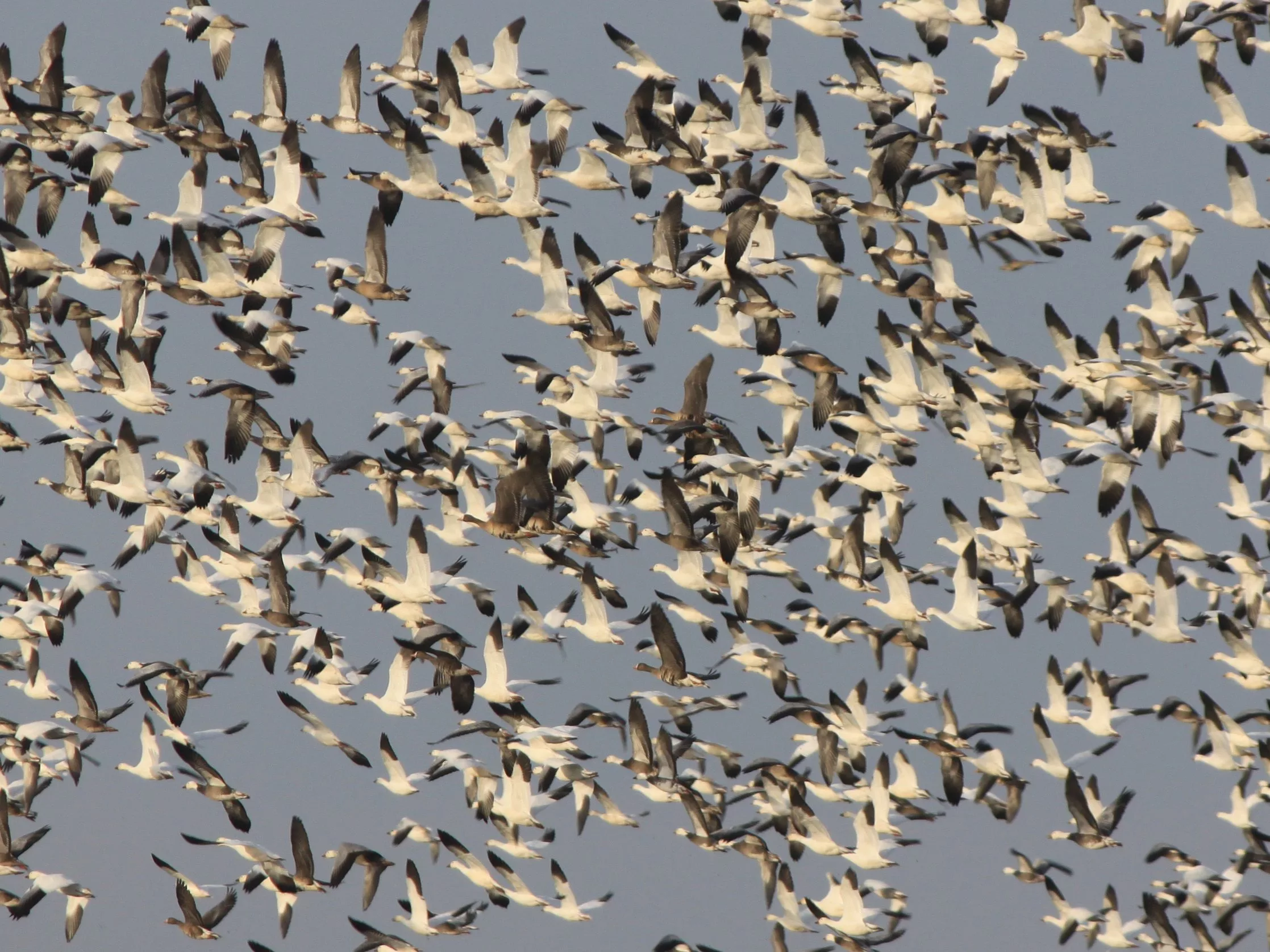
A Flock for the Flu. Light geese will begin their migration north shortly, and likely will have some form of the H5N1 virus in their populations. While infection from incidental contact with people, such as spring snow goose hunters, is unlikely, undertaking basic sanitary steps to prevent the spread of the disease would be prudent. Simonson Photo.
By Nick Simonson
The H5N1 strain of avian influenza, commonly called bird flu, has grabbed headlines as it impacts poultry and egg production across the United States. With each operation showing signs of infection often resulting in the euthanization of thousands of chickens or turkeys in its barns, concern mounts that the virus – or a more dangerous mutated form of it – may propagate into the wild fowl species which typically serve as its natural reservoir. However, as it sits, bird flu is unlikely to have any major effects on the upland birds living in North Dakota, or on those migratory waterfowl such as ducks and geese that will be returning to the region in the coming weeks, according to Charlie Bahnson, DVM, Wildlife Veterinarian for the North Dakota Game & Fish Department (NDG&F).
“We know that we have our native viruses in North America that circulate among waterfowl. As a duck or a goose, by the time you are about one year old, you’ve been exposed to these viruses. This deadly strain seems to be operating in the same way in that most waterfowl are exposed at some time, and probably only a small fraction of them end up dying,” Bahnson explains, continuing, “that’s in contrast to poultry; you introduce one of these viruses into a poultry system where you have a lot of animals in close proximity, they’re also very similarly related genetically, so there’s not a lot of variation there. And then, chickens and turkeys in general are more susceptible to this virus, so you can introduce this virus into a poultry operation and see 80 to 90 percent mortality within a matter of hours.”
The H5N1 flu strain was first detected in captive poultry in China in the mid-1990s. Since then it has become common in ducks and geese around the globe, with variants of it becoming more virulent at times when they are introduced between populations of migratory waterfowl across continents. Such intermingling of wild waterfowl will often trigger more noticeable infections and die-offs, as what was observed in 2022, when geese began returning north and dying off in North Dakota after a cold winter in North America and stressful conditions, even at warmer latitudes, which impacted their health, according to Bahnson.
“In 2015-2016 the virus came across the Bering Strait from Alaska and caused a lot of problems but eventually fizzled out in North America. We were good for another five to seven years, but then of course in 2022 it looks like the virus was reintroduced through wild birds, this time through the northeast part of the continent. It really moved across the country and caused pretty devastating impacts. North Dakotans will maybe remember that spring in 2022, we literally had snow geese falling out of the sky as they migrated through and the virus really raged through them,” Bahnson recalls.
The prevalence and previous exposure to the virus likely will prevent the current strains from becoming a threat to wild geese or ducks in the near future. However, exposure to captive birds held in large numbers and close together such as in poultry or egg farms, may provide the virus with untold opportunities to mutate within those birds, producing a more dangerous version as a result, which could then re-infect wild fowl and possibly other animals such as cattle and even humans, which has been observed recently in those with close interaction to poultry and dairy operations. Infection between birds and humans, however, remains low due to the nature of the virus, but people should take precautions with its prevalence this season.
“Occasionally these viruses that don’t really cause problems in waterfowl can spill into domestic poultry and evolve and become highly deadly. In most situations historically those viruses dead-end in poultry systems, but once in a while viruses can then get transmitted back to waterfowl,” Bahnson explains, adding with the spring light goose season approaching, “if you are hunting out there, or handling wild birds, you’re probably coming into contact with the virus to some degree. So, some commonsense safety recommendations are advised: wash your hands, wash your equipment that you dress your geese out with, and cooking meat thoroughly is good. If you happen to have birds at home – a backyard chicken flock or a pet bird – you want to be especially careful,” he concludes.
Simonson is the lead writer and editor of Dakota Edge Outdoors.
